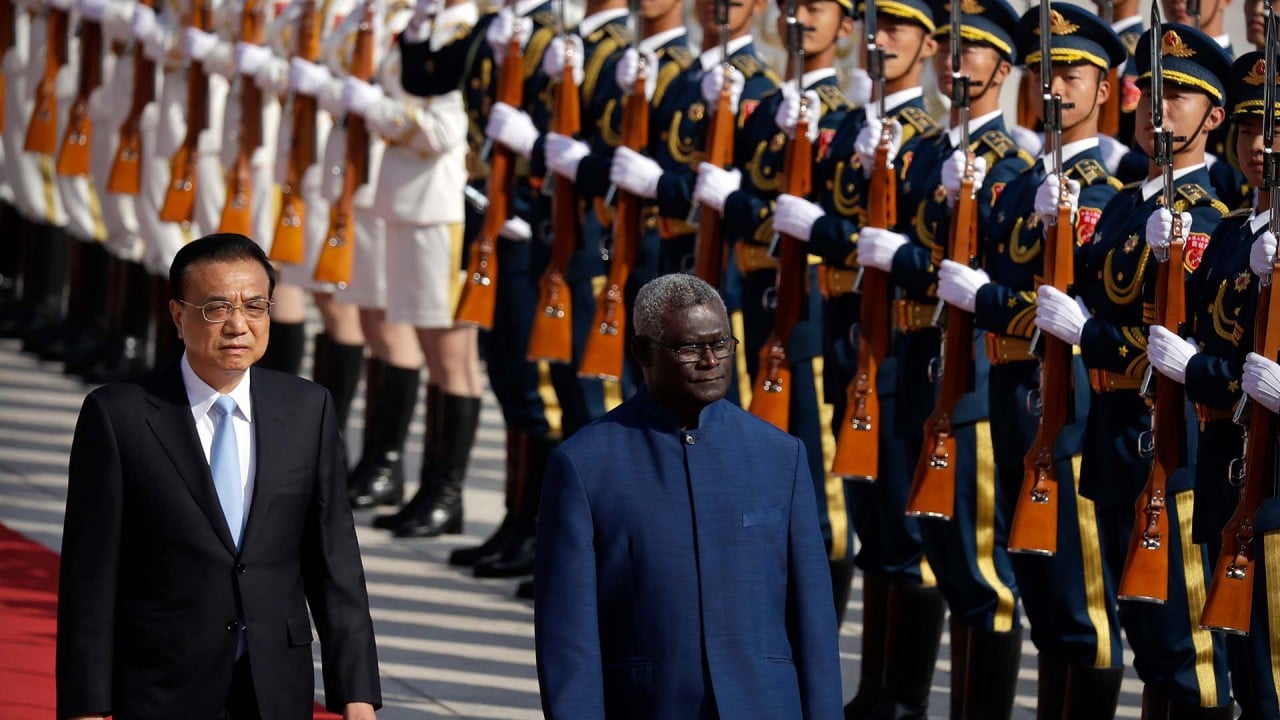
Focus on Pacific Island economies, climate crisis to counter China, US told
- US-China Economic and Security Review Commission hears the US must win hearts and minds of Pacific Islanders by taking their priorities seriously
- US government should take seriously Pacific Island concerns over economic opportunities, environmental and climate change crises
“The US and its allies and partners generally should seek to avoid further militarisation or resorting to military options first when dealing with the region,” said Derek Grossman, a senior defence analyst at the Rand Corporation in testimony to the USCC panel that evaluates China’s strategy for the Pacific Islands.
“To counter China’s military plans is likely only going to make the situation tenser.
While the United States, Australia and New Zealand raised concerns, Honiara said there would be no military base in the plan.
The USCC panel heard the testimony in Washington on the eve of a trip by deputy secretary of state Wendy Sherman to Samoa on Thursday. She will also visit Tonga and Solomon Islands in a multi-leg trip to Pacific Island countries intended to demonstrate re-engagement by the US.
Sherman will discuss plans to open US embassies in Tonga and Solomon Islands and the return of the US Peace Corps aid programme, according to the State Department.
In April, Washington sent Indo-Pacific adviser Kurt Campbell to the region days after the security pact was signed, a move in a series of renewed commitments, including the reopening of embassies, funding for fisheries and extra aid.
These were largely seen as efforts to counter Chinese influence – with Beijing also sending Foreign Minister Wang Yi on a eight-country tour in May to boost economic, military and police links with Pacific island nations hungry for foreign investment.
However, Wang failed to secure a multilateral pact on security and development despite more than 50 cooperation agreements being reached.
Pacific nations call for World Court to rule on big polluters’ obligations
Grossman said that despite Beijing’s recent efforts, it faced “immense challenges toward achieving diplomatic, economic or security parity with traditional powers, Australia, New Zealand and the United States, let alone primacy in the Pacific”.
While he noted that China might have plans to start military bases, they were not necessarily “game changing militarily” and would not “escalate into a regional war”.
However, both he and Alan Tidwell, a professor at Georgetown University who also spoke to the panel, recommended that the US government take seriously the Pacific Islands’ concerns over economic opportunities, environmental and climate change crises to have an edge over Chinese influence in the region.
Tidwell said that in the face of increased storm intensity and rising sea levels, replanting mangroves, securing potable water and securing food resources were “the kinds of things that Pacific Islanders desperately need”, and that China had not heavily invested in.
“From a US China competition perspective … denying climate change as we did during the past administration did us no favours because it essentially did [help] China’s counter narrative – that the US is fundamentally not a credible partner on climate change and cannot be trusted,” Tidwell said.
“I think any policy we could pass would add to our credibility. It’s an existential issue for the Pacific Islands. So they want us to go as big as humanly possible.”
Tidwell added in his written testimony that the US should continue to work with allies such as Australia, New Zealand and Japan to expand infrastructure funding in the region, and try to improve diplomatic relations with elected leaders by convening a meeting of Pacific Island leaders in Washington.
US military wants to expand ties with New Zealand, Pacific chief says
Both Beijing and Washington have vowed to address issues of concern from the Pacific Islands as they step up their engagement with the region.
Pacific Islands leaders have repeatedly made it clear that climate change is the greatest threat facing the region.
China has made inroads over the last decade, contributing nearly US$1.4 billion in investment to the Pacific Islands since 2010, according to Australian think tank the Lowy Institute – although it pales in comparison to Australia’s US$6.6 billion in aid over the same period.



